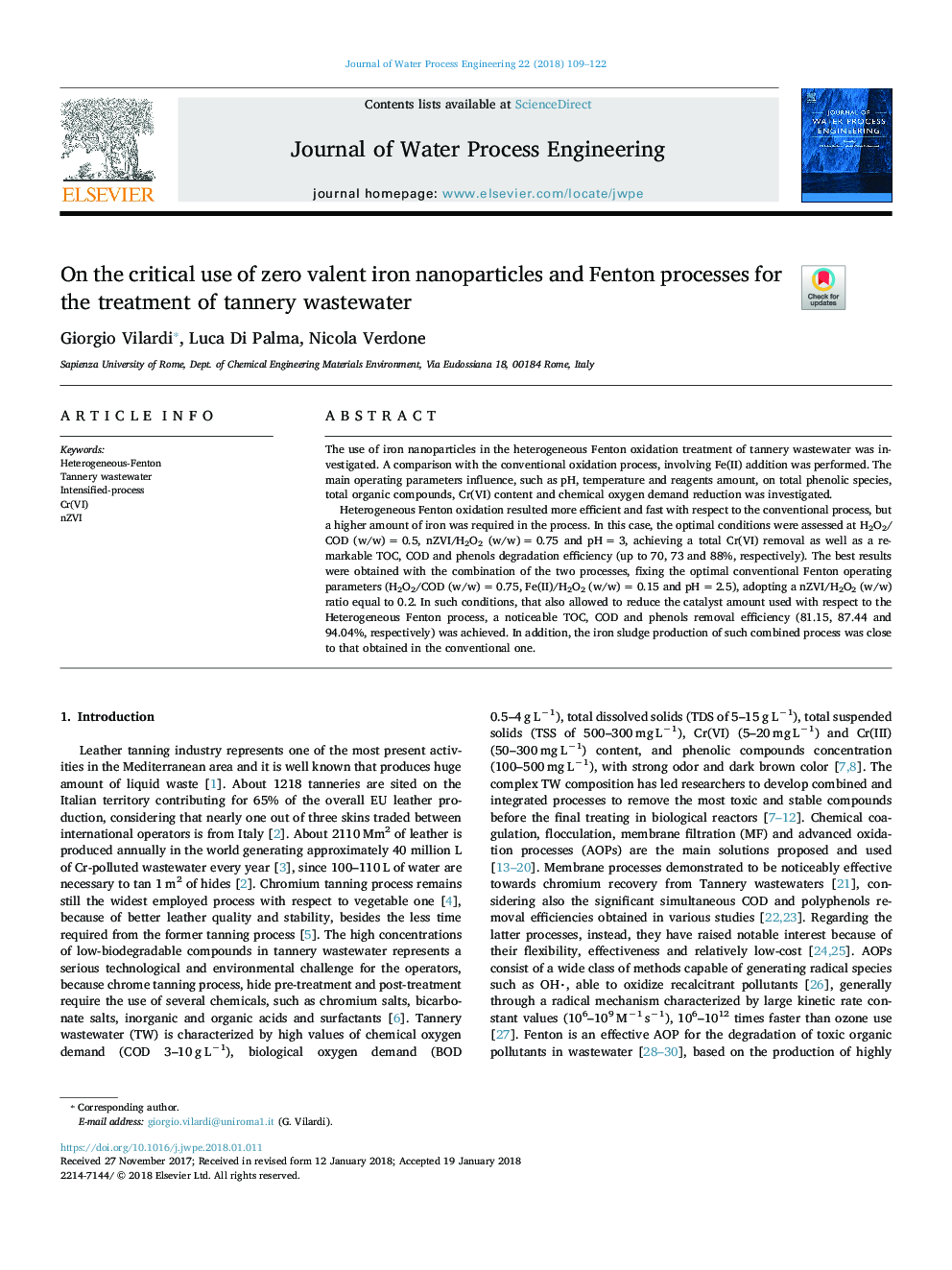| Article ID | Journal | Published Year | Pages | File Type |
|---|---|---|---|---|
| 6671968 | Journal of Water Process Engineering | 2018 | 14 Pages |
Abstract
Heterogeneous Fenton oxidation resulted more efficient and fast with respect to the conventional process, but a higher amount of iron was required in the process. In this case, the optimal conditions were assessed at H2O2/COD (w/w)â¯=â¯0.5, nZVI/H2O2 (w/w)â¯=â¯0.75 and pHâ¯=â¯3, achieving a total Cr(VI) removal as well as a remarkable TOC, COD and phenols degradation efficiency (up to 70, 73 and 88%, respectively). The best results were obtained with the combination of the two processes, fixing the optimal conventional Fenton operating parameters (H2O2/COD (w/w)â¯=â¯0.75, Fe(II)/H2O2 (w/w)â¯=â¯0.15 and pHâ¯=â¯2.5), adopting a nZVI/H2O2 (w/w) ratio equal to 0.2. In such conditions, that also allowed to reduce the catalyst amount used with respect to the Heterogeneous Fenton process, a noticeable TOC, COD and phenols removal efficiency (81.15, 87.44 and 94.04%, respectively) was achieved. In addition, the iron sludge production of such combined process was close to that obtained in the conventional one.
Related Topics
Physical Sciences and Engineering
Chemical Engineering
Chemical Engineering (General)
Authors
Giorgio Vilardi, Luca Di Palma, Nicola Verdone,
